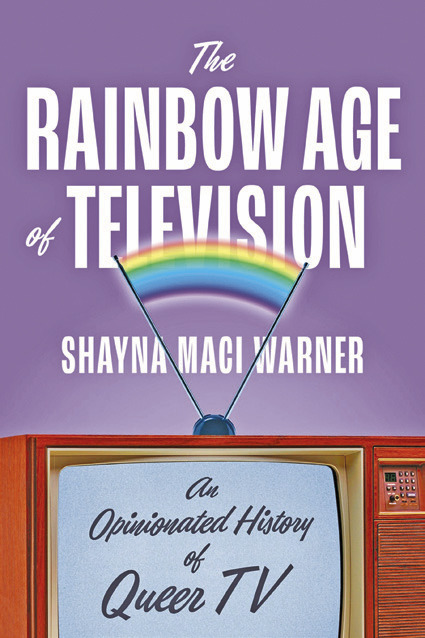Wanna hand over the clicker? You don’t want to miss the season premiere of that show you binge-watched over the summer. You’re invested, a fan who can’t wait to see what happens next. You heard that this may be the last season and you’ll be sad, if that’s so. Is it time to start looking for another, newer obsession or will you want to read “The Rainbow Age of Television” by Shayna Maci Warner, and find something old?
Like most kids of the ‘70s, ‘80s, and ‘90s, Shayna Maci Warner spent lots of time glued to a television screen, devouring programming before school, after school and all summer long. For Warner, that programming eventually led to a revelation. They saw people that looked like them, for which they formed “a personal attachment.”
It was “life-changing…” It didn’t happen all at once, and some of TV’s “milestones” are forever lost, since broadcasts were live until the 1950s. Shortly after shows were taped and preserved, homosexuality became a “source of worry and blunt fascination” but certain performers carefully presented gently risque characters and dialogue that nudged and winked at viewers.
Some queer representation appeared in the 1960s, but it wasn’t until the 1970s when dramas began to feature more gay and lesbian characters, however subtly. It took a while for “the ‘rest’ of the alphabet” to be represented in a meaningful way and — despite that Star Trek and its many versions included gender-diverse characters — it wasn’t until 1996 that an intersex infant was featured on a regular television drama.
Since Ellen DeGeneres came out practically on her namesake TV show and Will & Grace became a wild hit, queer representation on TV has ceased to be an unusual thing. And yet, programmers and writers know that caution is still warranted: Sometimes, “there can still be hesitation around pushing the envelope and fear that a queer character who burns too brightly just won’t last.”
Quick: Name three after-school TV shows that aired when you were in fourth grade. If you can’t do it, one thing’s for certain: you need “The Rainbow Age of Television.”
But get ready for some argument. Author Shayna Maci Warner offers a rabid fan’s look at the best and the worst queer representation had to offer, and you may beg to differ with what they say about various programs. That makes this book a critique, of sorts, but Warner offers plenty of wiggle room for argument.
Tussling over the finer points of queer programming, though, is only half the fun of reading this book. Microwave a box of pizza snacks or mac-and-cheese, demand “your” sofa seat, and dive into the nostalgia of old TV shows, most of them from the later last century. Yep, your faves are here. It’s like having an oldies channel on paper, and in your hand.
This is a must-have for former kids and current TV addicts who are happy to see themselves represented on TV. If that’s you, who brought the chips? “The Rainbow Age of Television” will just click.
— The Bookworm Sez


